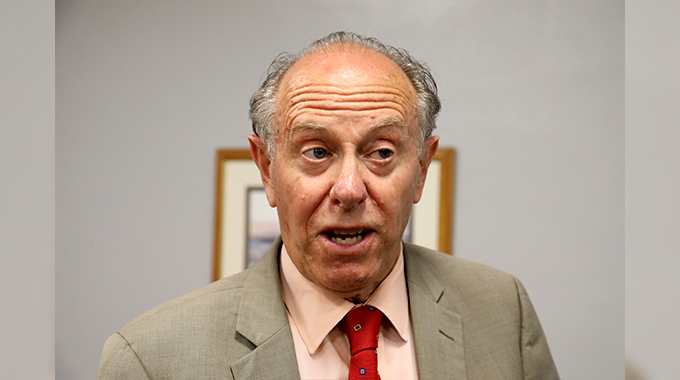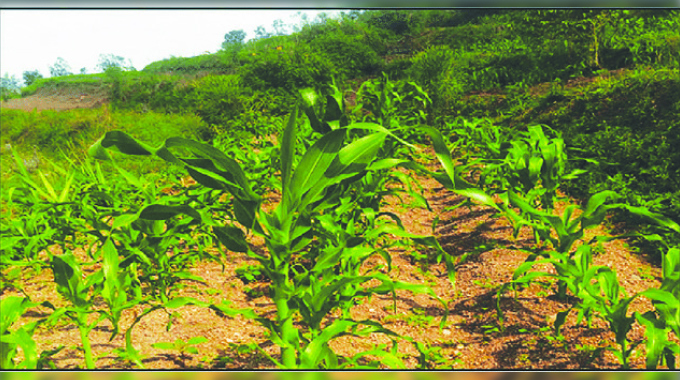Achieving MDGs challenge for Zim


The Presidium . . . President Mugabe and the First Lady Amai Grace Mugabe (centre) accompanied by Vice-President Joice Mujuru and Zanu-PF National Chairman Cde Simon Khaya Moyo arrive for the 14th Zanu-PF Annual National People’s Conference official opening in Chinhoyi last year
Yoliswa Dube
AT the turn of the millennium, Zimbabwe, like all UN member states, set out to achieve eight goals by 2015. Millennium Development Goals (MDGs) are socio-economic targets under which Zimbabwe seeks to see eradication of extreme hunger and poverty, achievement of universal primary education, promotion of gender equality and empowerment of women, reduction of child mortality, improvement of maternal health, combating HIV and Aids, malaria and other diseases, ensuring environmental sustainability and developing a global partnership for development.
With 2014 having begun and 2015 fast approaching, one tends to wonder whether or not Zimbabwe will achieve these goals by the set deadline. The pressure is on to intensify efforts but even then, is a year enough to achieve all this and has enough been done to ensure that come 2015, tangible results can be seen?
With regards to eradicating extreme hunger and poverty, the target was to halve, between 2002 and 2015, the proportion of people whose income is less than the Total Consumption Poverty Line (TCPL), achieve full and productive employment and decent work for all, including women and young people, halve, between 1990 and 2015, the proportion of people suffering from hunger and reduce by two-thirds between 2002 to 2015, the proportion of malnourished children under five.
Zimbabwe has taken significant strides in halving the proportion of people suffering from hunger and the proportion of malnourished children under five with the assistance of food aid among other programmes but achieving full and productive employment and decent work for all remains a serious challenge that has resulted in sleepless nights for many to say the least.
Industry after industry has closed down with more people losing their jobs than those being gainfully employed. Universities around the country continue to churn out degrees yet the employment sector is already flooded and has no room for fresh blood. This has left many degreed young people stranded on the streets. The noble and proactive few have turned to entrepreneurship and have used their imagination to earn a living for themselves and their families. Many have managed to establish a niche that would not only keep them occupied but enable them to take care of their financial obligations come the 30th of the month. They should be applauded for that, given a standing ovation even.
Zimbabwe has experienced improved economic growth rates in the past few years but this has not translated to growth in productive employment and hence poverty reduction, which is likely due to weak connections between the growth sectors and other sectors of the economy. According to a recent United Nations report, 72,3 percent of all Zimbabweans were considered poor, while 62,6 percent of the households in Zimbabwe were deemed poor. Poverty is more prevalent in rural areas compared to urban areas with about 76 percent of the rural households considered poor compared to 38,2 percent of urban households.
Individual poverty prevalence was 84,3 percent in rural areas compared to 46,5 percent in urban areas, while extreme poverty was 30,3 percent in rural areas compared to only 5,6 percent in urban areas. Furthermore, the decline in formal employment, with many workers engaged in poorly remunerated informal jobs, has a direct bearing on both poverty and hunger. In 2011, 94 percent of paid employees received an income equal to or below the TCPL for an average family of five, while three out of every four employed persons in Zimbabwe were classified as in “vulnerable employment.”
Turning to universal primary education, with the goal being to ensure that all Zimbabwean children, boys and girls alike, are able to complete a full programme of primary education by 2015, Zimbabwe has made a huge leap. Efforts have been made to ensure that every child receives a primary education. Although some children in rural areas still have to walk long distances to the nearest school, in most if not all instances, at least there is a primary school to go to. Infrastructural development remains a contentious issue but there is hope, meaningful efforts have been made to ensure that every child in Zimbabwe receives a primary education under decent shelter and in a conducive environment. The structures that have been put in place can only be improved and developed further.
Commitment to this goal was directly shown by President Mugabe’s conscious decision to set up the Ministry of Primary and Secondary Education, which will draw specific focus to primary and secondary education. This delineation makes it easier to plan and implement certain programmes in the future.
Gender equality and the empowerment of women remains work in progress. Eliminating gender disparity in primary and secondary education and in all levels of education no later than 2015 is an achievable goal. To date, more women have undertaken enrollment at tertiary institutions, not only at undergraduate level but at postgraduate level as well.
However, some people still view the education of women as a waste of time. Someone said something in my presence recently which I thought was very amusing. They said, “Unoita Masters uchikonewa kuroorwa (Why do a Masters degree instead of getting married)?”
It was said lightheartedly hence funny but it was rather shocking to hear that there were still people, in the 21st century, a global village, that still believe a woman’s place is in the home. The goal was to increase the participation of women in decision-making in all sectors and at all levels to 40 percent for women in senior civil service positions and to 30 percent for parliament by 2005 and to a 50:50 balance by 2015. Hypothetically speaking, this portion of the goal has not been achieved as parliament is already in place and that 50:50 balance remains abstract.
The reduction of child mortality and improvement of maternal health can be said to be above board as the Ministry of Health and Child Care has embarked on a variety of programmes that have seen the successful immunisation of children against a number of diseases as well as the provision of neonatal care, with the scrapping of maternal fees coming in handy.
In Zimbabwe, both under-five and infant mortality rates are improving but very slowly, too slow to achieve the 2015 deadline. Combating HIV and Aids, malaria and other diseases, has been a debatable issue. The question of combating HIV and Aids in particular has been bitter-sweet as some parts of the country have seen an increase rather than a decrease in the number of new HIV infections.
Zvishavane is one unique example. It is a mining town in which one of the biggest mines, Shabanie, closed down leaving many unemployed. There is a distinct gap between the rich and the poor, thereby creating a conducive environment for prostitution, a trade through which many young girls are surviving.
Furthermore, prostitutes come from as far as Bulawayo targeting illegal gold panners in the mining town. More needs to be done on behaviour change in 2014 and beyond 2015. Better still; the creation of employment would go a long way in eliminating the factors encouraging prostitution. Incidentally, the healthy workforce crisis remains a core barrier to achieving the MDGs for health with only 31 percent and 12 percent respectively of 75 Countdown countries likely to attain MDGs four and five, which are reducing child mortality and improving maternal health respectively. Despite donor and country commitments at the 1st and 2nd Global Forums on Human Resources for Health, the global health workers’ shortage persists.
Of the 57 countries identified as falling below the World Health Organisation (WHO) target, only 19 have seen an improvement in their aggregate health worker density. Earlier commitments to increase domestic resources or external aid, as well as implementation of the WHO Global Code of Practice on the International Recruitment of Health Personnel, remain largely unfulfilled.
Progress on environmental sustainability in Zimbabwe has been variable. Positive results include phasing out ozone-depleting substances, minimising carbon dioxide emissions as well as gradual improvements in access to safe sources of water.
However, there are indications that the water situation in Zimbabwe may have worsened in recent years. Deforestation remains a problem, as the majority of Zimbabweans continue to harvest natural resources such as firewood without the enforcement of any prohibitive regulations. The recent massacre of elephants is also disheartening. More needs to be done to protect and conserve our wildlife.
Zimbabwe is making progress in addressing the debt overhang, which is key for unlocking development assistance. Although relations with the West have largely stabilised, these remain crucial to engaging more effectively with the richer countries in order to encourage the return of investment and aid. Although a lot of the groundwork has been done, the reality is that 2015 will come and certain targets will not be reached. What Zimbabwe needs is to go beyond 2015. Work hard not only in 2014 but after 2015 has passed. The set standards should not deteriorate while onlookers watch helplessly. The bar can only be raised higher.









Comments